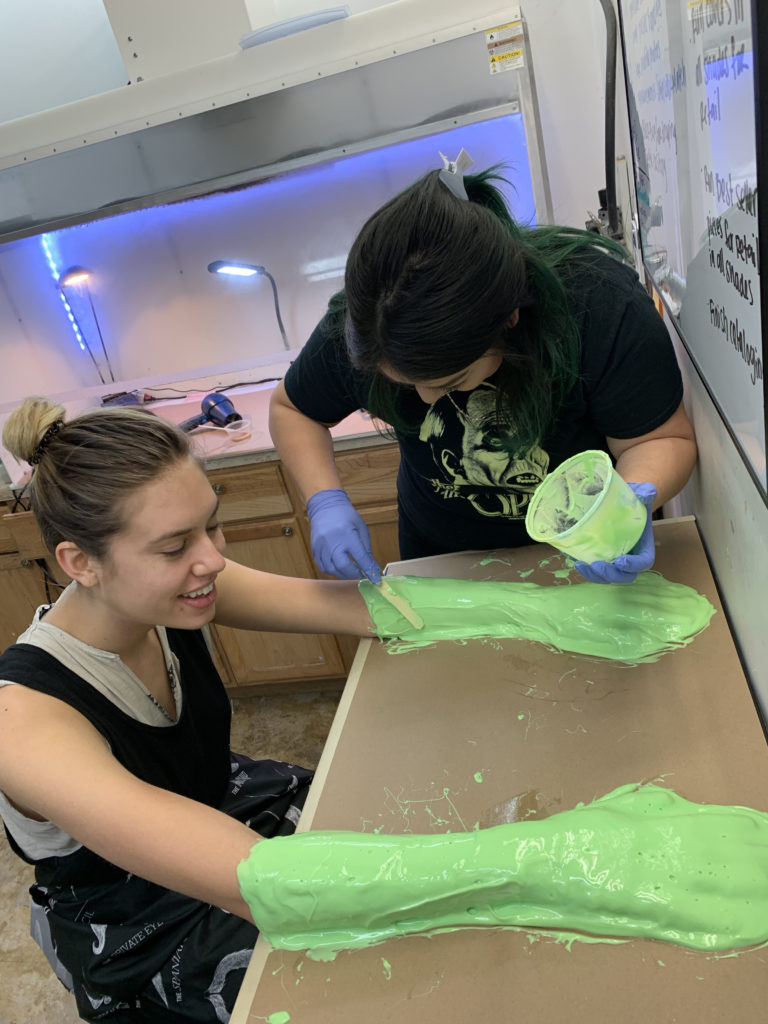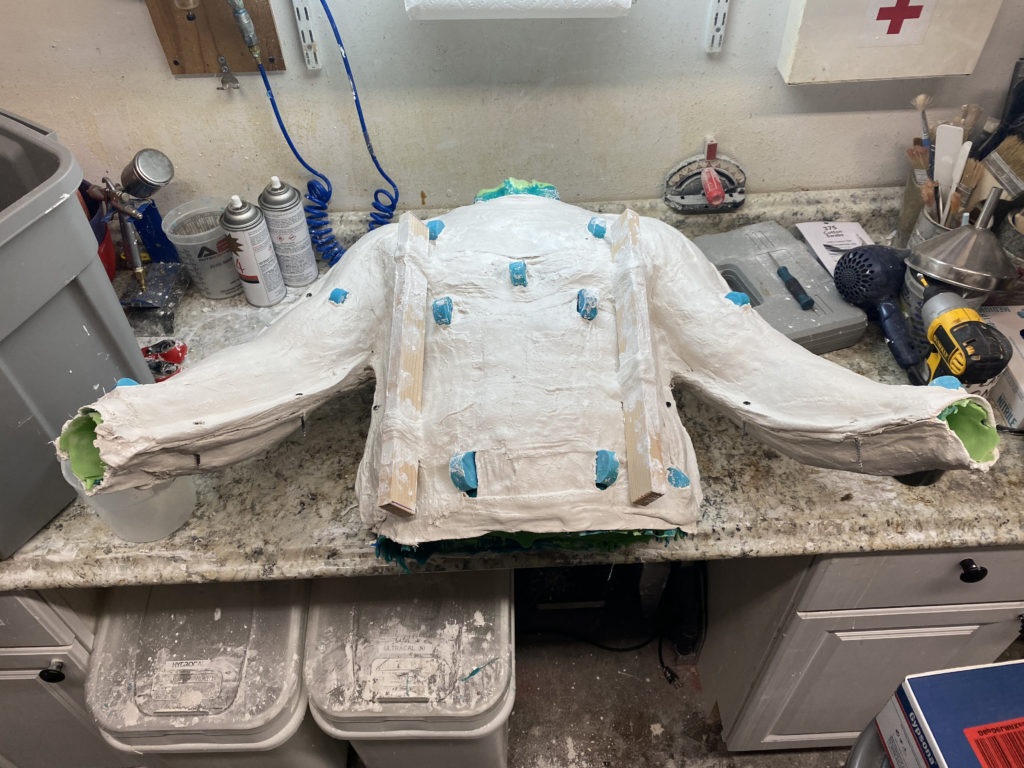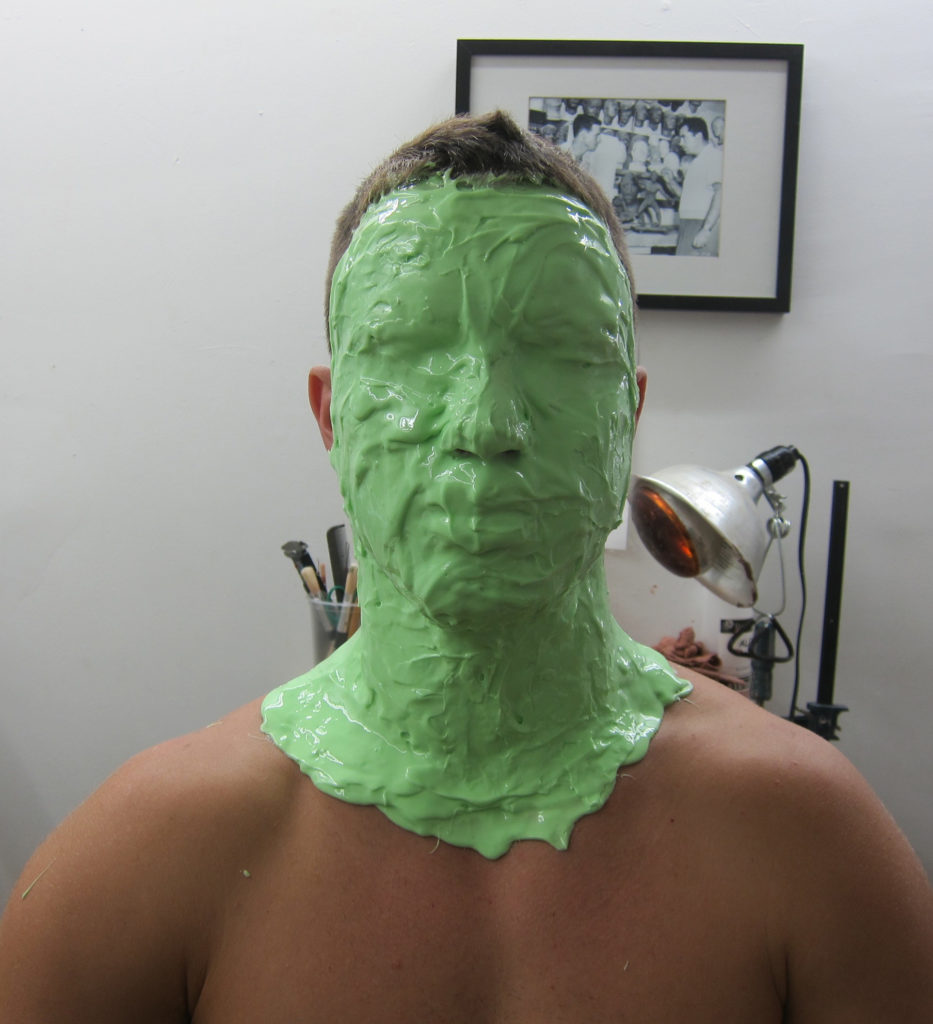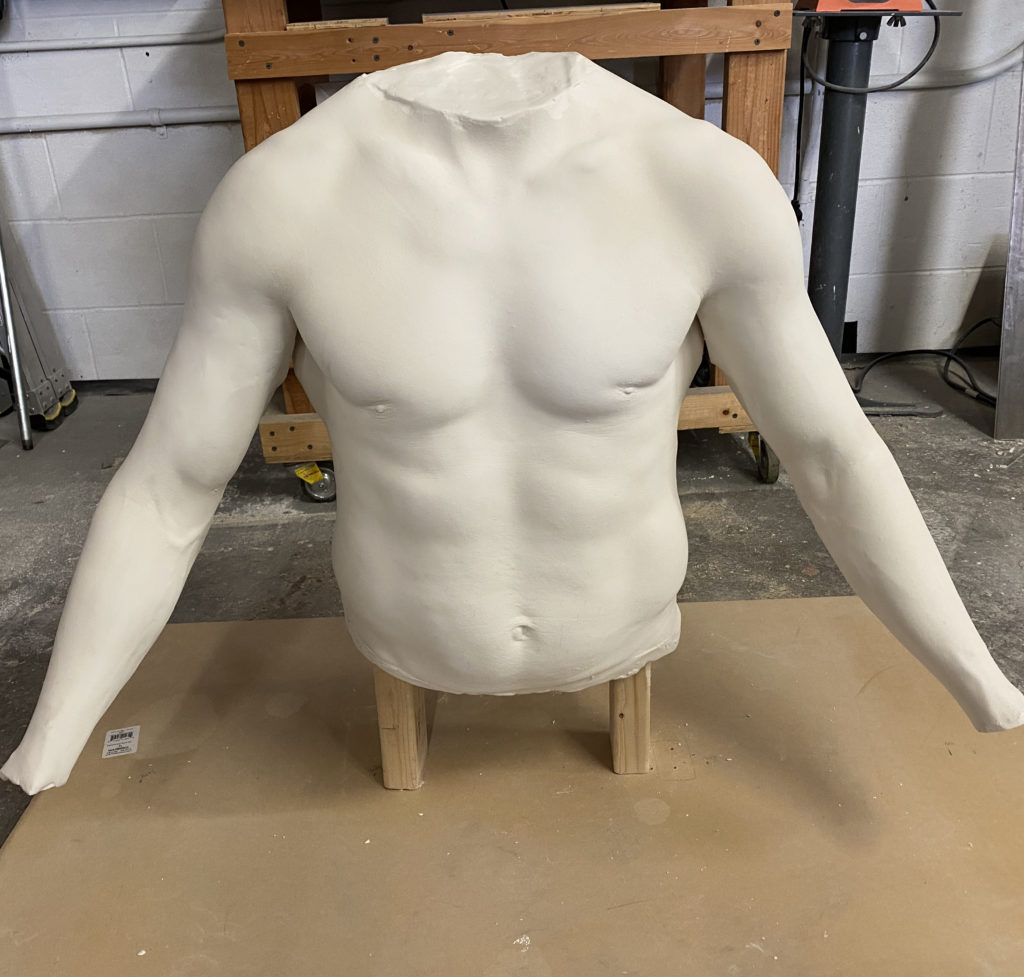LIFE CASTING


LIFE
CASTING
If your production needs prosthetic makeup effects applied to actors or stunt performers, we will need to create a life cast for each performer.
Life casting is the process of making a highly-detailed 3-dimensional replica of part or all of a human being. Life casts can be of just the performer’s face, their entire head, a part of the body, such as a wrist or ankle, or the entire body.
Why Do We Need to Life Cast?
You’ve probably seen how tailored clothes look better than those straight off the rack. Clothes that fit well complement the lines of your body. Clothes that don’t fit are always in conflict.
Fit is even more important with prosthetics. Prosthetics that fit properly conform to the lines of the performer’s face or body and move naturally with the surrounding skin.
Life Casting gives our team an exact copy of the performer’s face or body part with fine details, down to the texture of the skin. With this, they can design prosthetics that conform precisely to the desired area, creating effects that blend seamlessly with the skin of the performer.
The Creative Process at Stevie FX
Life Casting is part of a larger creative process at StevieFX, generally consisting of:
See Tattoos to find out about the Creative Process for Tattoos.
Like most creative processes, this is not always linear. Some productions jump in at different phases of the process and there may be multiple iterations of any steps, if needed.
Each step in the process is a process in itself.
The StevieFX Approach to Life Casting
We love life casting and the level of detail that it allows us to achieve in our work, but we don’t know any performers who look forward to having it done.
The performer’s job in life casting is to allow us to apply materials to their bodies. This involves a good deal of trust in us and in our abilities, especially if we are creating a life cast of his or her face.
Because of this, we take the procedure very seriously and do everything in our power to make the experience as worry free and quick as possible, including:
- Using the most advanced materials available for the life cast
- Talking to performers and putting them at ease before getting started
- Playing soothing music and creating a relaxed environment
- Having enough artists on hand to create the life cast as quickly and efficiently as possible
- Checking in frequently with performers throughout the session to make sure that they are comfortable
We also add the materials to the performers skin in progressive layers to keep performers feeling relaxed and confident.
Life Casting Materials
Years ago, everyone in the business used a material called alginate for their life casts. This is the same brown algae/kelp-based substance that dentists and orthodontists use to make impressions for fitting appliances such as mouth guards and braces.
Alginate is cost effective and safe to use, but its consistency and quick drying time make it very difficult to work with. It requires a rather frantic application and can be extremely stressful for both the artist applying it and the performer in the chair.
At StevieFX, we work exclusively with silicone.
Silicone is a much more precise material than alginate and allows us to work in layers. It allows for a much more relaxed process, working at a rate that balances speed with comfort. It’s wonderful for capturing extreme detail, down to the pores and texture of skin.
Working with silicone is a much more pleasant experience for both our artists and your performers.


The Life Casting Process at StevieFX
Every shop has its own techniques for life casting. At StevieFX, we generally:
- Set the scene. Before talent arrives, we arrive early to get everything ready. We put on soothing music and prepare our materials. Everything that we need is put within arm’s reach, leaving plenty of time so that everyone feels calm and relaxed.
- Prepare the talent. We greet the performers, giving them an overview of what we’re going to do, and giving them an opportunity to ask questions. Once they feel confident in what will happen next, they put on a cap and protective clothing and we get to work.
- Start with the nose. The biggest worry performers face during life casting is thr fear of not being able to breathe. That’s why we always start with the nose, if we’re doing a life cast of the face or head, so that the performer still has full mobility and can see everything that is happening. After applying silicone to the area, we take the time to let it cure before proceeding.
Once performers see that they can still breathe without a problem, they are much more relaxed for the rest of the session.
- Proceed to the ears. If we are creating a life cast of the full head, we do the ears next. Performers sometimes find applying silicone to their ears to be a strange sensation because silicone in the ears affects the way sound travels. We find that talent stays much more relaxed when we do the ears after the nose, while they can still see.
- Finish the rest of the face/head or body part. Now that the harder parts are over, the rest can move pretty quickly.
- Apply plaster bandages. Once the silicone has cured, we apply plaster bandages to create a support shell and allow it to harden.
- Remove plaster support shell and silicone life cast. That’s it! The silicone peels easily from the skin without removing facial hair.
Once Life Casting is complete, you’re ready for Sculpting.
Want to know more about Life Casting or how we can bring your characters or creatures to life?

